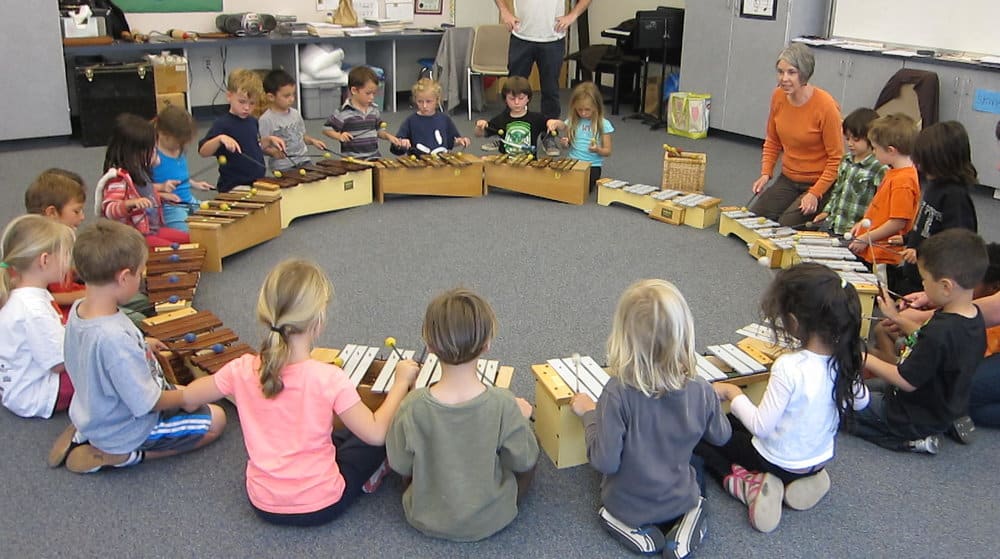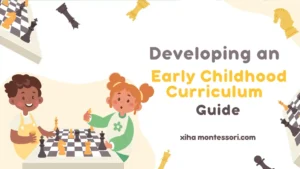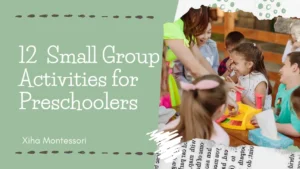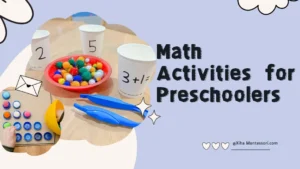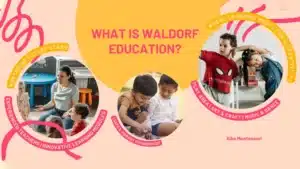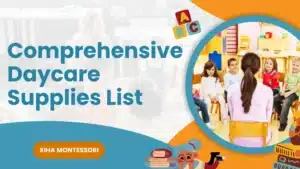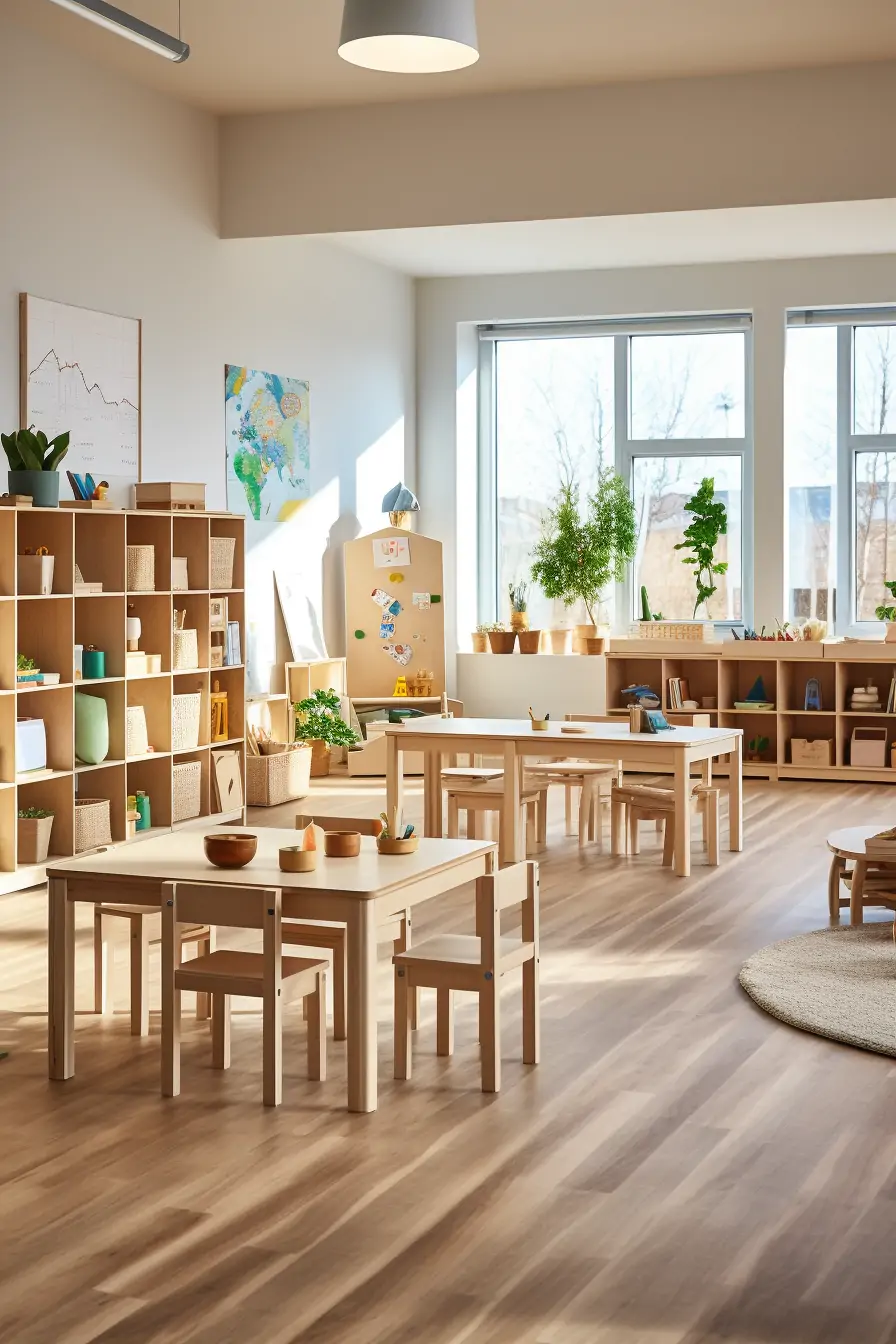Introducing music and movement is essential during early childhood development. Music and movement activities help children develop problem-solving skills and encourage cognitive growth, self-expression, and social development.
Music and movement in early childhood refer to activities that use music and movement. These can be activities that involve singing and dancing, or that have children create music with instruments to develop motor skills, increase children’s cognitive abilities, and encourage creativity.
If the term music and movement in early childhood made you imagine a chaotic scene of children running around singing/screaming while holding a tambourine, you are not alone. But, that is not what music and movement is all about. Here we discuss what music and movement in early childhood entail.
What is Music and Movement in Early Childhood?
Children naturally love music and begin reacting to music at an early age. We encounter music every day. Whether it is a jingle in an advert or the music playing in the supermarket, it is all around us. Children naturally want to interact with the music they encounter throughout their daily lives.
Music and movement play an important role in early childhood development. They help with cognitive development, the strengthing of social skills, and fine and gross motor skills. Music and movement also play a role in physical and emotional well-being and encourage children to express themselves safely and creatively.
Movement and music in early childhood refer to introducing children to music and movement through activities. The activities incorporate singing, chanting, and musical instruments while children explore movement through music. Movement can mean dancing or the action done to accompany a song or even playing a musical instrument such as shaking or banging.
Music and movement provide a way for children to release energy but can also be used to soothe a child. In a traditional preschool setting, music can ease task transitions. Introducing music and movement activities help children develop their self-esteem and independence.

Why is Music and Movement Important in a Child’s Development?
During early childhood development, children learn how to do lots of new things. During this time, children are figuring out how to move their bodies, process sounds, and recreate the sounds they hear through talking, shouting, and singing.
Before children can verbalize a need, they often learn to sign or act out what they need. Children use movement to communicate, such as by pointing and nodding. It is because of this, that music and movement is considered essential in assisting children during the early stages of their development.
Music and movement activities encourage development in the following areas:
- Problem-Solving – Music and movement help children work through problems by encouraging logical and sequential thinking and reasoning. This impacts their cognitive development.
- Social Skills – Music and movement activities often are performed in a group setting. This helps children learn how to interact with their peers, communicate effectively and work as a team.
- Self-Expression and Awareness – Children learn to communicate their feelings and thoughts through music and movement. Children develop a better understanding of how their body moves and how this makes them feel.
- Gross-Motor Skills – Children learn to move their bodies in new and creative ways. This means they use both the big and small muscles (gross and fine motor skills). Movements that involve stretching, bending over, and jumping develop gross motor skills.
- Fine Motor Skills – Fine motor skills are developed through pinching or grasping. Playing a musical instrument or performing action songs can require children to make small movements. It is these small movements that develop fine motor skills.
- Language Development – Many of the songs used during music and movement play are rhythms that help children recognize phonetics. The repetitiveness of action songs also helps children understand commands through engaging with them playfully.
Listening to and making music encourages pattern recognition and can help children learn how to differentiate between sounds. It is no wonder that music and movement is an integral part of the Montessori classroom and curriculum.
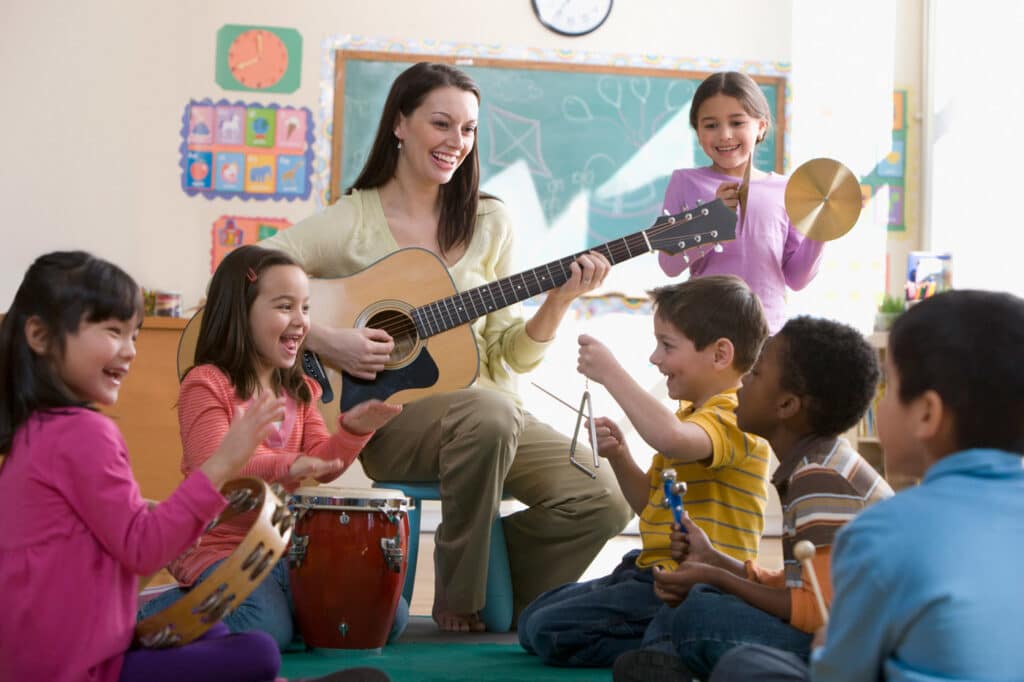
What is The Connection Between Music and Movement?
Music and movement often go hand-in-hand and can be found in everyday life. This is a fact that is seemingly intuitively known by humans in every culture. People across all cultures create music and move to it.
Our bodies react naturally to the beat and rhythm of music, be it with a reserved toe tap or head bob or full-body movement like dancing. Toddlers, in particular, seem to naturally and spontaneously want to sing and dance and clap along to the music.
The natural inclination that children show towards music and movement is why activities surrounding both are taught in classrooms. It is why they play such a big role in a Montessori environment. Music and movement can be taught weekly or daily.
Music and movement are universally recognized as being able to elicit an emotional response in humans. When taught or encouraged in a classroom, they can help children develop positive connections with themselves, peers, and caregivers.
“It is movement that interests the child in music, and it is by movement that the very tiny child can arrive at understanding music with considerable delicacy. ”
-Dr. Maria Montessori
What is Music and Movement Play?
Music and movement play are activities that make music and movement the main subject of play. There are music and movement activities suitable for each stage of early childhood development. For example, an infant may reach toward the musical mobile hanging above their crib, wanting to interact with it. The music triggered the movement.
Music and movement activities can be classic childhood games such as musical chairs or musical statues. Both games require an action to happen when the music stops or starts. Both of these games promote gross-motor skills development and problem-solving.
Action songs are another example of music and movement. The ‘Open Shut’ song help develop fine motor skills when children perform the ‘creep and crawl’ part with their fingers. ‘Wind the Bobbin’ is another fun action song that can be beneficial to children. Eventually, they will start to perform the actions with you and sing along.
Exploring musical instruments is another music and movement play activity. Picking up the instrument, naming it, and then playing it all support the cognitive development of language and fine motor skills.
Music and movement play help children learn because they engage in more than one sense. In fact, music and movement play engage nearly all the senses! Dr. Maria Montessorri believed engaging children’s senses with hands-on tasks is the best way to learn.
“Music can touch us in a way that nothing else can. No better gift can we give to the children than to open this door for them.”
-Dr. Maria Montessori
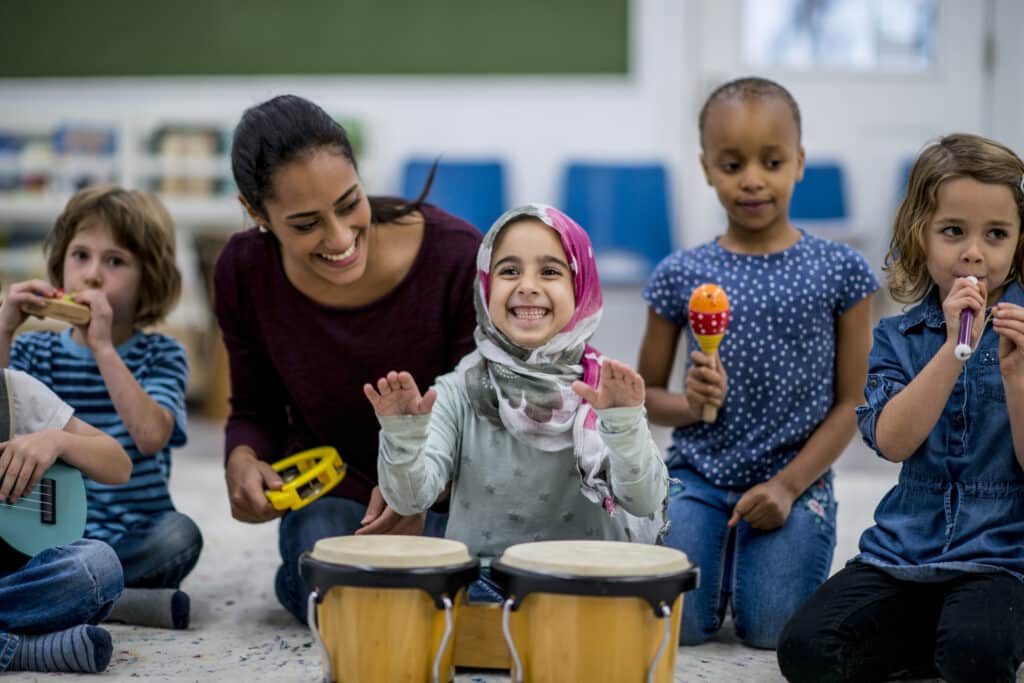
Why do Teachers Teach Music and Movement?
Music and movement form a part of school curriculums because of the many benefits of introducing the concept to children during early childhood. Children naturally want to move when they hear music. Music and movement encourage children to interact with their space and explore all the different ways they can make their bodies move in that space.
Children in early childhood have lots of energy! A great way to channel this energy is through music and movement. Energy release is not the only reason music and movement is universally included in classrooms. Recent research has shown that children who regularly partake in music and movement activities find it easier to approach subjects such as math and science.
By engaging in music and movement activities, children build their confidence in themselves. This is done by becoming sure of a movement or being able to sing a song. Being able to sing a song develops language skills too.
Music and movement activities can be kept separate and only performed within designated times. Or teachers can incorporate them into everyday routines, such as signing while washing hands. Teaching music and movement is a great way to help children develop social skills! Music and movement can be individual activities or performed in a group. Group activities teach children teamwork.
How Important is Music and Movement in Early Childhood Education?
Music and movement is of the utmost importance in early childhood education because it helps several areas of development. Music and movement help children learn how to express themselves, and it aids in the emotional-social development of children.
A high emotional intelligence, or EQ level, as it is commonly referred to, is linked to later success in all areas of life. Emotional intelligence helps children and adults understand their emotions and how to regulate them.
Children who develop a high EQ are seemingly happier, more successful, and form better relationships in later life. Music and movement activities contribute to children developing a higher EQ level.
Children need to be presented with the opportunity to develop all of their potential skills and talents in a way that will not make them feel self-conscious.
Incorporating music and movement into a child’s education during early childhood development encourages listening. By this I mean it encourages children to listen with purpose. Through music, children learn how to distinguish between sounds and, in turn, learn how different sounds make them feel or make them want to move.
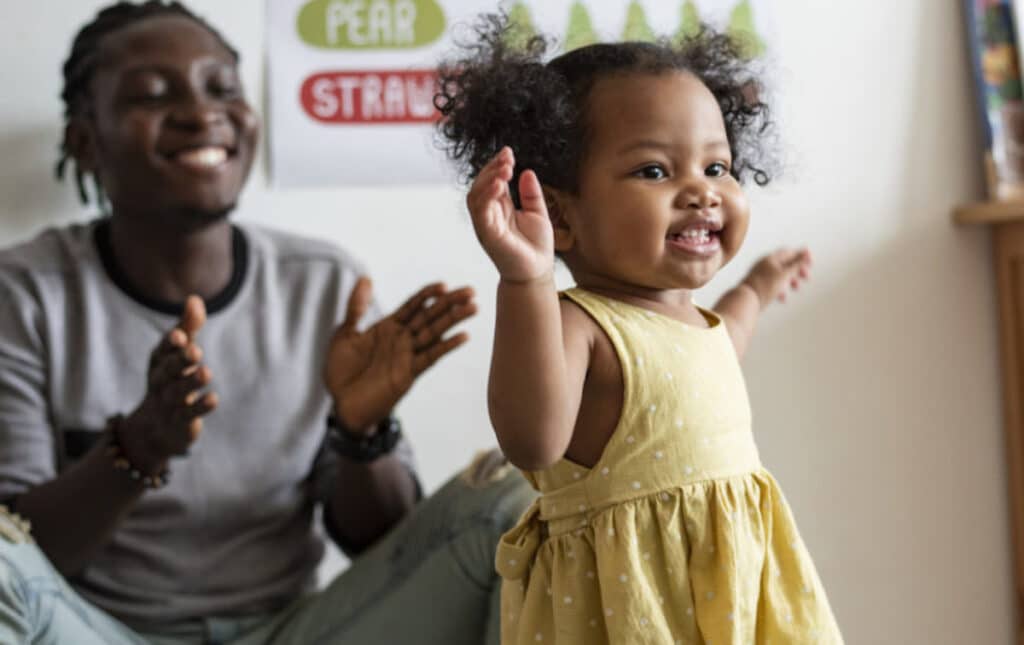
What is Music and Movement Good For?
There are several benefits to including music and movement in a child’s education during early childhood (and beyond!). Music and movement, have been found to be so beneficial to development that they are now being used as a therapeutic tool for children on the Autism spectrum.
The benefits of movement and music include:
- Creativity – Music, and movement encourage creativity and self-expression. When children play with musical instruments and can make their bodies move how they want children to learn to be creative.
- Mood Altering – Music and movement can influence the mood of a child. It can be used to energize or soothe children, and there is evidence to suggest that it can increase school performance.
- Coordination Development- The movements that accompany these activities need the coordination of hands and feet. They often involve marching, hopping, jumping, and skipping.
- Physical Well-Being – activities involving movement are a great way to get children up and moving about in a fun and engaging way! These activities help with coordination, balance, and body control.
- Cognitive Development – Music and movement activities help children with their ability to concentrate. They also help to develop memory, language, and decision-making abilities.
Physical activity, in particular, has been shown to increase children’s ability to learn and help children focus. Due to the nature of songs and actions, music and movement improve memory.
Music and movement each follow a pattern or sequence, encouraged by the beat or rhythm of the music. Actions and words follow this sequence which the child needs to remember and follow. This process improves memory.
What is the Teacher’s Role in the Early Childhood Music and Movement Program?
The first six years of a child’s life are considered to be the most crucial years for development. Dr. Maria Montessorri referred to children between the ages of 0-6 as having an absorbent mind. Children learn through observation of their environment. Children observe what goes on and, in response, move their bodies and formulate words to engage with and understand their environment.
The role of a teacher during early childhood development is important, especially when it comes to introducing music and movement. Music and movement activities, should be included in the daily activities of the classroom. The teacher can actively engage during the activity, or initiate and guide the actions.
Children should be encouraged to interact with musical instruments such as shakers, tambourines, and drums by having the items available in the classroom for children to choose from. The teacher can encourage movement to accompany the music, such as marching, stomping, or hopping.
The role of the teacher is to provide ample opportunities for children to interact and engage with music. Teachers can include music and movement in the following ways:
- Singing.
- Encouraging a movement to a beat or rhythm, such as marching or hand clapping.
- Playing with musical instruments.
- Playing music in the classroom and activities that involve music and a subsequent movement. For example, engaging children with the classic action song ‘Head, Shoulders, Knees and Toes’.
- Listening to different types of music teaches children about cultures.
- Learning about music by reading a book about a composer or musician is just as beneficial as participating in making it.
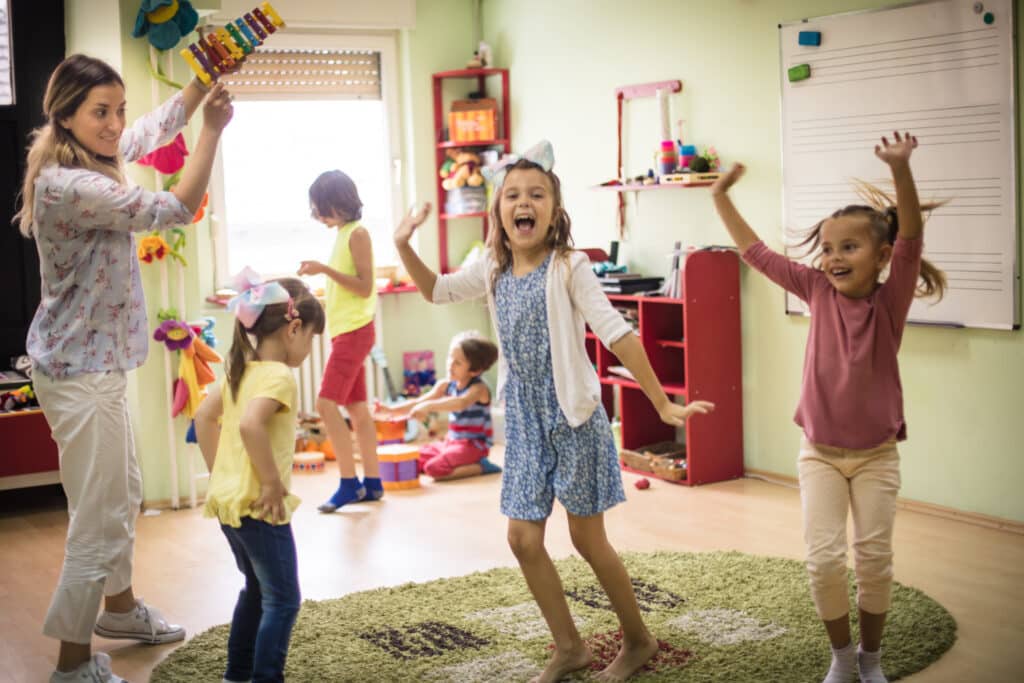
In a Montessori environment, the role of the teacher is to guide the music and movement activities, not to lead them. Teachers should prepare the classroom purposefully to encourage the exploration of music and movement. This is achieved by setting up music and movement activities on the shelf so that children can learn through experimentation with the objects prepared.
Dr. Maria Montessorri observed that children who engage with all of their senses while learning learn best. Music and movement activities do just that!
During music and movement activities, almost all of the senses are used. In a Montessori classroom, children are encouraged to explore and engage with music and movement individually or in a group.

